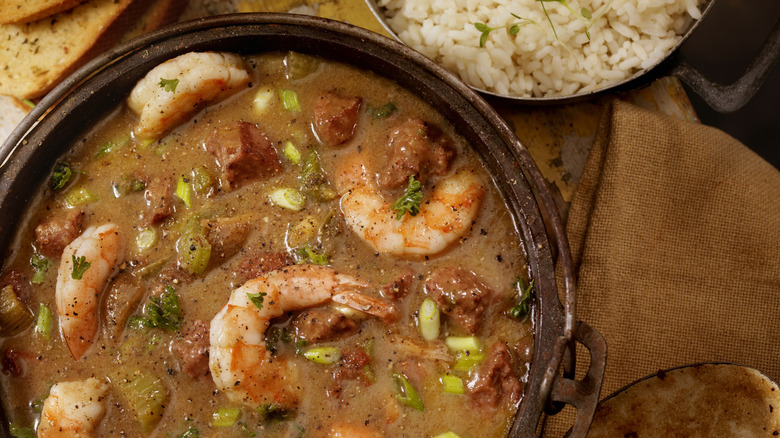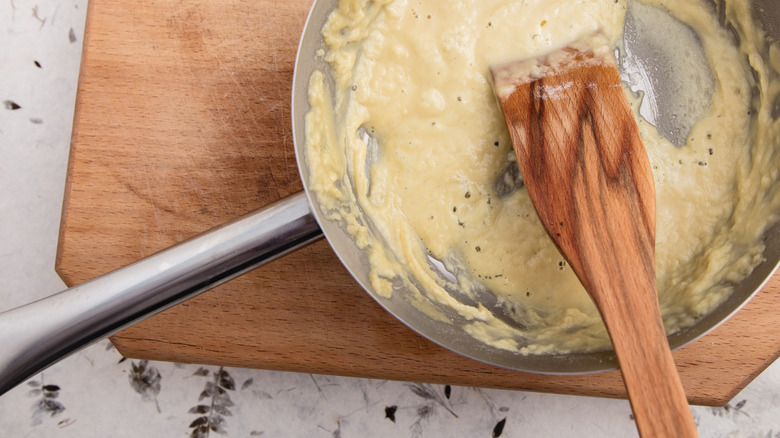A New Orleans Chef's Advice For The Best Tasting Roux
Roux is one of the fundamental building blocks of European-American cuisine. Literally: This combination of cooked fat and flour, used to thicken sauces and stews, is the basis of three of the five French "mother" sauces — velouté, espagnole, and béchamel. It's a critical ingredient in mac and cheese, clam chowder, lasagna, and much more. Still, when people in the U.S. hear the word "roux," they might think of Louisiana, where generations of Creole and Cajun cooks have elevated the ingredient into an art form with richly flavored gumbo, shrimp étouffée, and the like. So, when Mashed wanted to get some tips on making the best-tasting roux, we turned to Darren Chabert, chef de cuisine at Saint John Restaurant, a "haute Creole" destination in New Orleans' Warehouse District. (You can check it out on Instagram.)
Chabert advises, "Don't walk away." Roux cooked on the stovetop needs constant attention, and constant stirring, so it won't burn — and you'll want to monitor the color and aroma of the roux until you get it where you want it. Start by heating your fat on high, Chabert says, then turn it to medium-low once you add the flour. If you're making a darker roux, plan on standing and stirring for a while — maybe put on a podcast or something. "Low and slow should be your mantra," says Chabert, who also has pointers on what kind of fat to use, the best ratio of fat to flour, and more.
The importance of a well-made roux
You can thicken stews by just adding flour, of course — but anybody who's tried to sprinkle raw flour onto a hot liquid knows there's a risk of clumping. By premixing fat and flour, roux removes that risk. It also cooks off the raw taste and, depending on what kind of roux you're making, replaces it with a flavor that's toasty and aromatic. These tips are for stovetop cooking, but you can also make roux in the oven.
Proportions are also important. Darren Chabert shares, "A very good ratio that I use is equal parts of fat [to] flour by weight. Measuring by weight is simply more accurate." All-purpose flour is standard, but many fats will work, including lard, butter, or oil. If you're going for a dairy-free option, Chabert recommends corn, canola or vegetable oil. Oil-based roux has a longer shelf-life and can be kept up to two weeks in the refrigerator.
There are four types of roux that are referred to by their colors: white, blond, peanut butter, and dark. White, commonly made with butter, is the quickest-cooking version. It takes as little as five minutes. It adds thickening power but little flavor — it's what you use in a béchamel. The darker roux, like you find in Cajun cooking, are the ones that take a lot longer — up to 45 minutes. Time commitment aside, great roux can be easily made at home. Chabert says, "Almost all of the best gumbos that I have had weren't in a restaurant."

